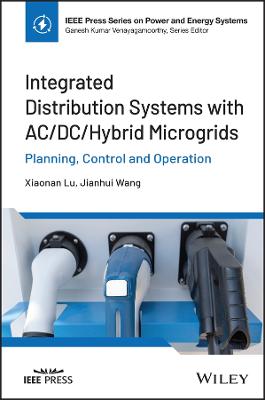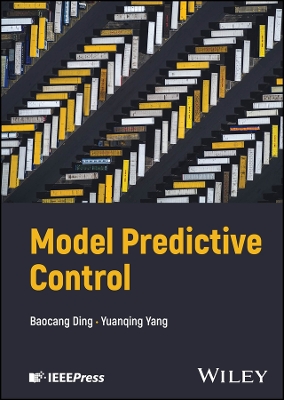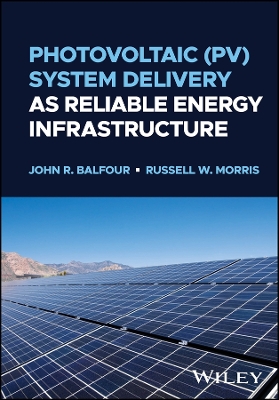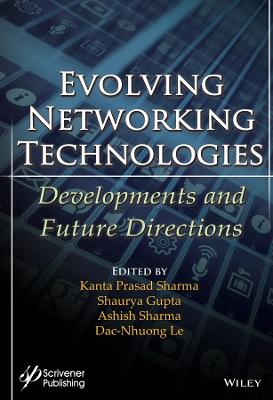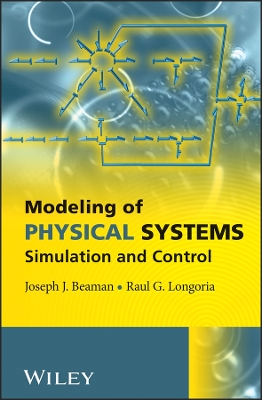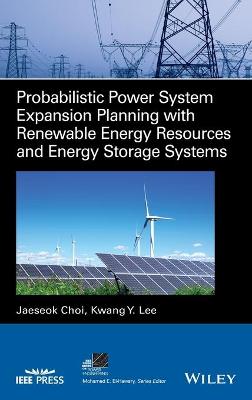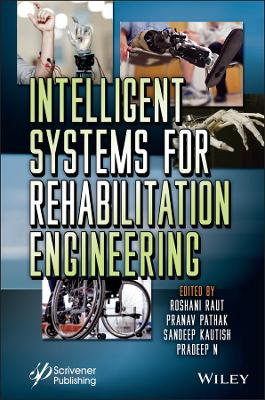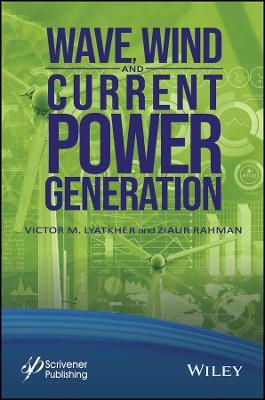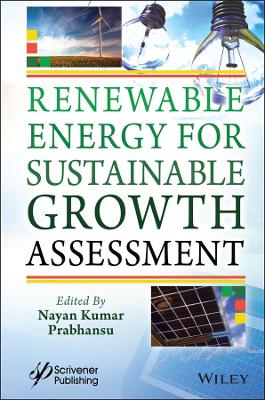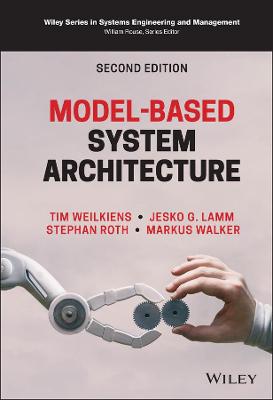Microgrids
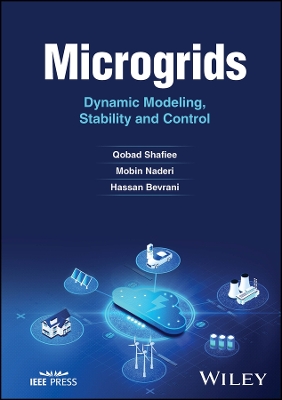 -15%
portes grátis
-15%
portes grátis
Microgrids
Dynamic Modeling, Stability and Control
Bevrani, Hassan; Shafiee, Qobad; Naderi, Mobin
John Wiley & Sons Inc
12/2023
448
Dura
Inglês
9781119906209
15 a 20 dias
666
Preface xvii
Acknowledgments xix
Acronyms xxi
1 Introduction 1
1.1 Overview 1
1.2 Microgrid Concept and Capabilities 2
1.3 Microgrid Structure 2
1.4 Microgrids in the Future Smart Grids 5
1.5 Microgrids-Integrated Power Grids 7
1.6 Current Trends and Future Directions 8
1.6.1 Dynamic Behavior of MGs and Their Impacts on Power Grids 9
1.6.2 Microgrid-Based Ancillary Services 10
1.6.3 Dynamic Modeling and Control 10
1.7 The Book Content and Organization 10
References 12
Part I Individual Microgrids 15
2 Microgrid Dynamic Modeling: Concepts and Fundamentals 17
2.1 Introduction 17
2.2 Dynamics and Modeling 19
2.3 Fundamental Analysis Tools and Requirements 20
2.3.1 State-Space (Small-Signal) Modeling 21
2.3.1.1 Finding Differential Equations 21
2.3.1.2 Park and Clark Transformations 22
2.3.1.3 Linearization 23
2.3.1.4 State-Space Representation 24
2.3.1.5 Interconnecting Modules 25
2.3.2 Detailed Modeling 28
2.3.3 Simplification Methods 28
2.3.3.1 Truncation (Regular Perturbation) 29
2.3.3.2 Residualization (Singular Perturbation) 30
2.3.3.3 Aggregation 30
2.3.3.4 Sensitivity Analysis 32
2.3.4 Prony Analysis 33
2.3.5 Large-Signal Modeling 35
2.4 Small-Signal Modeling of Microgrid Components 35
2.4.1 DC-AC Converter (Inverter) 36
2.4.2 AC-DC Converter (Rectifier) 36
2.4.3 DC-DC Converter (Chopper) 37
2.4.4 LC Filter 39
2.4.5 Power Network 39
2.4.5.1 Virtual Resistor Calculation 40
2.4.6 Loads 41
2.4.6.1 Constant RL Impedance Load 42
2.4.6.2 Constant Power Load (CPL) 43
2.4.6.3 Motor Load 44
2.4.6.4 Active Load 44
2.4.7 Energy Resources and Storages 46
2.4.7.1 Wind Generation Unit 46
2.4.7.2 Photovoltaic Generation Unit 50
2.4.7.3 Battery 52
2.4.7.4 Super-Capacitor 55
2.5 Small-Signal Modeling of Microgrid Controllers 58
2.5.1 Primary Control Strategies 58
2.5.1.1 Grid-Forming Strategy 59
2.5.1.2 Grid-Following Strategy 65
2.5.2 Secondary Control 68
2.5.3 Higher Control Levels 70
2.6 Large-Signal Modeling: An Example 70
2.6.1 Governing Equations on Synchronverter 70
2.6.2 Nonlinear State-Space Representation 72
2.7 Summary 72
References 73
3 Microgrid Dynamic Modeling: Overall Modeling and Case Studies 79
3.1 Introduction 79
3.2 Overall Microgrid Dynamic Modeling 80
3.2.1 Common Reference Frame 80
3.2.2 Microgrid General State-Space Model 81
3.2.3 Grid Model 81
3.3 Small-Signal Modeling of DC and AC Microgrids 82
3.3.1 A Grid-Connected PV 82
3.3.2 Grid-Connected AC Microgrids 84
3.3.3 Islanded AC Microgrids: The Detailed Model 85
3.3.4 Islanded AC Microgrids: A Sensitivity Analysis-Based Simplified Model 86
3.3.4.1 Removing/Reconfiguration Process of Modules 86
3.3.4.2 DLFMs Comparison of the Detailed and Simplified Models 88
3.3.4.3 The Oscillatory DLFM Comparison 89
3.3.5 Islanded AC Microgrids: Aggregated Single-Order Model 90
3.3.5.1 General Steps of Modeling 90
3.3.5.2 Virtual Swing Equation-Based Single-Order Model 91
3.3.6 Islanded DC Microgrid 93
3.4 Large-Signal Modeling of Microgrids 96
3.4.1 Model Validation 96
3.4.2 Time-Domain Simulations 98
3.5 Summary 99
References 100
4 Microgrids Stability 103
4.1 Introduction 103
4.2 Stability Definition and Classification 104
4.3 Basic Requirements 106
4.3.1 Eigenvalue Analysis 106
4.3.2 Participation Matrix 107
4.3.3 Sensitivity Analysis 108
4.4 Small-Signal Stability Analysis 109
4.4.1 Grid-Connected PV 109
4.4.1.1 Sensitivity Analysis: LC Filter Parameters 111
4.4.1.2 Sensitivity Analysis: Coupling/Grid Line Length 111
4.4.1.3 Sensitivity Analysis: PLL Gains 112
4.4.1.4 Sensitivity Analysis: Current Control Gains 113
4.4.1.5 Sensitivity Analysis: DC Voltage Control gains 113
4.4.2 Grid-Connected AC Microgrids 114
4.4.2.1 Sensitivity Analysis: Grid Strength Study 115
4.4.2.2 Sensitivity Analysis: Interaction of GFL DERs 116
4.4.3 Islanded AC Microgrids 117
4.4.3.1 Sensitivity Analysis of Droop Gains 117
4.4.3.2 Sensitivity Analysis of Virtual Impedance 118
4.4.3.3 Stability Analysis of Secondary Control 120
4.4.3.4 Sensitivity Analysis of GFL DER Parameters 122
4.4.3.5 Weakness of AC Microgrids 123
4.4.3.6 Relative Stability Improvement Using Grid-Supporting Control Strategy 125
4.4.4 Islanded DC Microgrids 129
4.5 Transient Stability 131
4.5.1 Power Sharing Stability in AC Microgrids 131
4.5.2 Synchronverter Stabilization 134
4.5.2.1 Adaptive Backstepping Stabilizing Method 134
4.5.2.2 Simulation Results 136
4.6 Summary 137
References 139
5 Microgrid Control: Concepts and Fundamentals 143
5.1 Introduction 143
5.2 Fundamentals and Requirements 143
5.2.1 Introduction to Control Systems 143
5.2.2 Control Objectives and Challenges 144
5.2.3 Control Architectures 146
5.3 Control Strategies for Power Converters 149
5.3.1 Introduction 149
5.3.2 Grid-Following Power Converters 150
5.3.2.1 Current Control 151
5.3.2.2 Synchronization Algorithm 153
5.3.3 Grid-Forming Power Converters 153
5.4 Hierarchical Control 155
5.4.1 The Control Hierarchy 155
5.4.2 Control Layers 156
5.5 Primary Control 157
5.5.1 Droop Control 160
5.5.1.1 Droop Control for Inductive Grids 162
5.5.1.2 Droop Control for Resistive Grids 163
5.5.1.3 Droop Control for Resistive-Inductive Grids 163
5.5.1.4 Discussion on the Conventional Droop Control 164
5.5.1.5 Droop Control for DC Grids 167
5.5.2 Virtual Impedance 168
5.5.3 A Simulation Study for Primary Control of AC Microgrids 169
5.5.3.1 Case Study 169
5.5.3.2 Simulation Results 169
5.6 Secondary Control 173
5.6.1 Secondary Control Functions and Strategies 173
5.6.1.1 Secondary Control Functions 173
5.6.1.2 Secondary Control Strategies 175
5.6.2 Centralized Secondary Control 175
5.6.3 Distributed Secondary Control 176
5.6.3.1 Communication Network as a Graph 176
5.6.3.2 Average-Based DISC 177
5.6.3.3 Consensus-Based DISC 177
5.6.3.4 Event-Triggered DISC 178
5.6.4 Decentralized Secondary Control 179
5.6.4.1 Washout Filter-Based DESC 180
5.6.4.2 Local Variable-Based DESC 180
5.6.4.3 Estimation-Based DESC 180
5.6.5 A Simulation Study for Secondary Control of AC Microgrids 182
5.6.5.1 Case Study and Controller Implementation 182
5.6.5.2 Simulation Results 182
5.7 Central Control 185
5.8 Global Control 186
5.9 Summary 186
References 187
6 Advances in Microgrid Control 197
6.1 Introduction 197
6.2 Advanced Control Synthesis 198
6.2.1 Advanced Control Techniques 198
6.2.1.1 Optimal Control 199
6.2.1.2 Robust Control 200
6.2.1.3 Nonlinear Control 200
6.2.1.4 Intelligent Control 200
6.2.2 Model Predictive Control 201
6.2.2.1 MPC for Microgrids 202
6.2.2.2 Finite Control Set Model Predictive Control 203
6.2.3 Model Predictive Control of DC Microgrids with Constant Power Loads 204
6.2.3.1 Case Study and Dynamic Modeling 205
6.2.3.2 Design Methodology 208
6.2.3.3 Real-Time Hardware in the Loop Results 210
6.2.4 Hybrid Fuzzy Predictive Control for Smooth Transition of AC Microgrids 210
6.2.4.1 Case Study and Dynamic Modeling 213
6.2.4.2 Control System Design 216
6.2.4.3 Simulation Results 218
6.3 Virtual Dynamic Control 221
6.3.1 Concept and Structure 221
6.3.2 Virtual Synchronous Generator (VSG) 223
6.3.2.1 VSG Applications 225
6.3.3 Virtual Dynamic Control of DC Microgrids 226
6.3.3.1 Dynamic Improvement of DC Microgrids Using Virtual Inertia Concept 226
6.3.3.2 Case Study and Simulation Results 228
6.4 Resilient and Cybersecure Control 230
6.4.1 Microgrid as a Cyber-Physical System 230
6.4.2 Communication Requirements 232
6.4.3 Cybersecurity 233
6.4.3.1 Network/Data Cyber Threats on Microgrids 234
6.4.3.2 Distributed Secondary Control Under Network Cyber Attacks 235
6.4.3.3 Cyberattack Detection 236
6.4.3.4 Cyberattack Mitigation 240
6.4.4 Event-Triggered Control 240
6.4.4.1 Event-Triggered Secondary Control of AC Microgrids 242
6.4.4.2 Physical and Control Layers 242
6.4.4.3 Secondary Control Design 243
6.4.4.4 Case Study and Simulation Results 245
6.5 Summary 250
References 250
Part II Interconnected Microgrids 263
7 Interconnected Microgrids: Opportunities and Challenges 265
7.1 Introduction 265
7.2 An Overview 267
7.3 Architectures of Interconnected Microgrids 269
7.4 Benefits, Challenges, and Research Fields 271
7.5 Operation of Interconnected Microgrids 272
7.6 Vacancies for Future Research 273
7.6.1 IMG Dynamic Modeling 273
7.6.2 IMG Stability Analysis 273
7.6.3 IMG Control 274
7.7 Summary 274
References 275
8 Modeling of Interconnected Microgrids 285
8.1 Introduction 285
8.2 Interconnection Method 286
8.3 Module Modeling 287
8.3.1 Microgrid Modeling 289
8.3.1.1 Modeling of Secondary Control for CB-IMGs 291
8.3.1.2 Other MG Modules 294
8.3.1.3 Overall MG Model 294
8.3.2 Interlinking Line Modeling 295
8.3.3 Back-to-Back Converter Modeling 296
8.3.3.1 AC Side of the BTBC 297
8.3.3.2 DC Side of the BTBC 297
8.3.3.3 Dependent Current and Voltage Sources 298
8.3.3.4 BTBC Power Part Interconnection 299
8.3.3.5 Power Controller 299
8.3.3.6 DC Voltage Controller 300
8.3.3.7 Synchronizing PLLs 300
8.3.3.8 Complete Interconnection of BTBC Modules 301
8.3.4 Circuit Breaker Modeling 302
8.4 Overall IMG Modeling 302
8.4.1 Comprehensive Modeling of CB-IMGs 302
8.4.2 Comprehensive Modeling of BTBC-IMGs 305
8.5 Model Validation 305
8.5.1 Model Validation Procedure 305
8.5.2 Real-Time Simulator 307
8.5.3 Validation of CB-IMG Modeling 308
8.5.3.1 Case Study Information 308
8.5.3.2 Prony Analysis Results 308
8.5.3.3 Comparison Results 309
8.5.4 Validation of BTBC-IMG Modeling 312
8.6 Reduced-Order Models 312
8.6.1 Simplified Model Application in CB-IMG Frequency Control 313
8.6.2 Simplified Model of MGs and CB-IMGs 314
8.6.3 Comparing Detailed and Single-Order Models 316
8.7 Summary 317
References 317
9 Stability of Interconnected Microgrids 323
9.1 Introduction 323
9.2 IMG Stability Review 324
9.3 Small-Signal Stability Analysis 324
9.3.1 Eigenvalue Analysis of CB-IMGs 325
9.3.2 Frequency Stability of CB-IMGs 326
9.3.2.1 Intermicrogrid Oscillatory Modes 326
9.3.2.2 Frequency Response 327
9.3.3 Eigenvalue Analysis of BTBC-IMGs 328
9.4 Sensitivity Analysis 331
9.4.1 CB-IMGs 331
9.4.2 BTBC-IMGs 332
9.4.2.1 DC Side and Voltage Controller of Back-to-Back Converter 332
9.4.2.2 PLLs of Back-to-Back Converter 333
9.4.2.3 ? ? P Droop Characteristic 334
9.4.2.4 Cutoff Frequency (?c) of LPFs 334
9.4.2.5 Initial DC Voltage (V2dc0) 335
9.4.2.6 Comparison Between Two and Three Interconnected Microgrids 336
9.4.2.7 Number of Interconnected Microgrids 336
9.5 Transient Stability of BTBC-IMGs: BTBC DC Voltage 337
9.5.1 Energy-Based Transient Stability Analysis 337
9.5.2 Minimum Stabilizing DC Voltage Criterion 338
9.5.2.1 Time Interval ?Tstab 338
9.5.2.2 Capacitance of the cjdc 339
9.5.2.3 Injected Power to the DC Link (Pjdc0) 339
9.5.2.4 MSDVC Comparison with Common Transient Stability Criteria 339
9.5.3 Grid Strength Impact 340
9.5.4 BTBC Power Flow Direction 341
9.5.5 Time-Domain Simulations 341
9.5.5.1 Frequency Instability of BTBC-IMGs 341
9.5.5.2 Voltage Instability of BTBC-IMGs 342
9.5.5.3 Power Flow Direction 343
9.5.5.4 Pre-charging Before Power Flow 344
9.5.5.5 Initial Power Transfer Limit 344
9.6 Summary 345
References 346
10 Control of Interconnected Microgrids 349
10.1 Introduction 349
10.2 Overview on IMG Control 350
10.2.1 CB-IMGs 352
10.2.2 BTBC-IMGs 353
10.2.3 DC-IMGs 355
10.3 Frequency Control for CB-IMGs 356
10.3.1 Tuning of Secondary Control Gains 356
10.3.2 Virtual Inertia Control 358
10.4 Power Sharing Control for CB-IMGs 359
10.5 Power Exchange Control for BTBC-IMGs 361
10.5.1 Prerequisites of Individual Microgrid Control 361
10.5.2 Interlinking Back-to-Back Converter Control 364
10.5.3 Simulation Results for Planned BTBC-IMG Power Exchange 365
10.5.3.1 Two BTBC-IMGs 366
10.5.3.2 Multiple BTBC-IMGs 368
10.6 Emergency Control for BTBC-IMGs 370
10.6.1 Logical Control 372
10.6.2 Generalized Droop Control 375
10.6.3 Coordination of BTBC Emergency Controls 376
10.6.4 Real-Time Simulation Results 377
10.6.4.1 Bidirectional Power Flow Support 377
10.6.4.2 Averaging Interval Impact on the Controller Performance 380
10.6.4.3 DER Plug-and-Play 380
10.6.4.4 Three Interconnected Microgrids 382
10.7 Summary 382
References 383
11 Synchronization in Interconnected Microgrids 389
11.1 Introduction 389
11.2 Synchronization Control Requirements 390
11.2.1 Basic Control of CB-IMGs 390
11.2.2 Synchronization Control of CB-IMGs 391
11.3 Inrush Power Analysis 393
11.3.1 Modeling of Inrush Power 393
11.3.2 Impact of PCC Voltage Parameters on the Inrush Power 394
11.3.3 Impact of X/R Ratio and Impedance Value on the Inrush Power 395
11.4 Small-Signal Modeling and Stability Analysis 396
11.4.1 Small-Signal Modeling of IMGs 396
11.4.1.1 Modeling of Sub-Systems 396
11.4.1.2 Modeling of Synchronization Control Unit 398
11.4.1.3 Modeling of Overall IMGs 398
11.4.2 Small-Signal Stability Analysis 398
11.4.2.1 Synchronization Control Parameter 399
11.4.2.2 Secondary Control Parameters 399
11.5 Transient Stability Assessment 399
11.5.1 Transition During Synchronization 400
11.5.2 Time-Domain Simulations 401
11.5.2.1 Trade-Off Between Synchronization Control Objectives 401
11.5.2.2 Constraints Impact on the Synchronization Transients 403
11.5.2.3 Synchronization During High-Load MGs 404
11.6 Summary 404
References 405
Index 409
Preface xvii
Acknowledgments xix
Acronyms xxi
1 Introduction 1
1.1 Overview 1
1.2 Microgrid Concept and Capabilities 2
1.3 Microgrid Structure 2
1.4 Microgrids in the Future Smart Grids 5
1.5 Microgrids-Integrated Power Grids 7
1.6 Current Trends and Future Directions 8
1.6.1 Dynamic Behavior of MGs and Their Impacts on Power Grids 9
1.6.2 Microgrid-Based Ancillary Services 10
1.6.3 Dynamic Modeling and Control 10
1.7 The Book Content and Organization 10
References 12
Part I Individual Microgrids 15
2 Microgrid Dynamic Modeling: Concepts and Fundamentals 17
2.1 Introduction 17
2.2 Dynamics and Modeling 19
2.3 Fundamental Analysis Tools and Requirements 20
2.3.1 State-Space (Small-Signal) Modeling 21
2.3.1.1 Finding Differential Equations 21
2.3.1.2 Park and Clark Transformations 22
2.3.1.3 Linearization 23
2.3.1.4 State-Space Representation 24
2.3.1.5 Interconnecting Modules 25
2.3.2 Detailed Modeling 28
2.3.3 Simplification Methods 28
2.3.3.1 Truncation (Regular Perturbation) 29
2.3.3.2 Residualization (Singular Perturbation) 30
2.3.3.3 Aggregation 30
2.3.3.4 Sensitivity Analysis 32
2.3.4 Prony Analysis 33
2.3.5 Large-Signal Modeling 35
2.4 Small-Signal Modeling of Microgrid Components 35
2.4.1 DC-AC Converter (Inverter) 36
2.4.2 AC-DC Converter (Rectifier) 36
2.4.3 DC-DC Converter (Chopper) 37
2.4.4 LC Filter 39
2.4.5 Power Network 39
2.4.5.1 Virtual Resistor Calculation 40
2.4.6 Loads 41
2.4.6.1 Constant RL Impedance Load 42
2.4.6.2 Constant Power Load (CPL) 43
2.4.6.3 Motor Load 44
2.4.6.4 Active Load 44
2.4.7 Energy Resources and Storages 46
2.4.7.1 Wind Generation Unit 46
2.4.7.2 Photovoltaic Generation Unit 50
2.4.7.3 Battery 52
2.4.7.4 Super-Capacitor 55
2.5 Small-Signal Modeling of Microgrid Controllers 58
2.5.1 Primary Control Strategies 58
2.5.1.1 Grid-Forming Strategy 59
2.5.1.2 Grid-Following Strategy 65
2.5.2 Secondary Control 68
2.5.3 Higher Control Levels 70
2.6 Large-Signal Modeling: An Example 70
2.6.1 Governing Equations on Synchronverter 70
2.6.2 Nonlinear State-Space Representation 72
2.7 Summary 72
References 73
3 Microgrid Dynamic Modeling: Overall Modeling and Case Studies 79
3.1 Introduction 79
3.2 Overall Microgrid Dynamic Modeling 80
3.2.1 Common Reference Frame 80
3.2.2 Microgrid General State-Space Model 81
3.2.3 Grid Model 81
3.3 Small-Signal Modeling of DC and AC Microgrids 82
3.3.1 A Grid-Connected PV 82
3.3.2 Grid-Connected AC Microgrids 84
3.3.3 Islanded AC Microgrids: The Detailed Model 85
3.3.4 Islanded AC Microgrids: A Sensitivity Analysis-Based Simplified Model 86
3.3.4.1 Removing/Reconfiguration Process of Modules 86
3.3.4.2 DLFMs Comparison of the Detailed and Simplified Models 88
3.3.4.3 The Oscillatory DLFM Comparison 89
3.3.5 Islanded AC Microgrids: Aggregated Single-Order Model 90
3.3.5.1 General Steps of Modeling 90
3.3.5.2 Virtual Swing Equation-Based Single-Order Model 91
3.3.6 Islanded DC Microgrid 93
3.4 Large-Signal Modeling of Microgrids 96
3.4.1 Model Validation 96
3.4.2 Time-Domain Simulations 98
3.5 Summary 99
References 100
4 Microgrids Stability 103
4.1 Introduction 103
4.2 Stability Definition and Classification 104
4.3 Basic Requirements 106
4.3.1 Eigenvalue Analysis 106
4.3.2 Participation Matrix 107
4.3.3 Sensitivity Analysis 108
4.4 Small-Signal Stability Analysis 109
4.4.1 Grid-Connected PV 109
4.4.1.1 Sensitivity Analysis: LC Filter Parameters 111
4.4.1.2 Sensitivity Analysis: Coupling/Grid Line Length 111
4.4.1.3 Sensitivity Analysis: PLL Gains 112
4.4.1.4 Sensitivity Analysis: Current Control Gains 113
4.4.1.5 Sensitivity Analysis: DC Voltage Control gains 113
4.4.2 Grid-Connected AC Microgrids 114
4.4.2.1 Sensitivity Analysis: Grid Strength Study 115
4.4.2.2 Sensitivity Analysis: Interaction of GFL DERs 116
4.4.3 Islanded AC Microgrids 117
4.4.3.1 Sensitivity Analysis of Droop Gains 117
4.4.3.2 Sensitivity Analysis of Virtual Impedance 118
4.4.3.3 Stability Analysis of Secondary Control 120
4.4.3.4 Sensitivity Analysis of GFL DER Parameters 122
4.4.3.5 Weakness of AC Microgrids 123
4.4.3.6 Relative Stability Improvement Using Grid-Supporting Control Strategy 125
4.4.4 Islanded DC Microgrids 129
4.5 Transient Stability 131
4.5.1 Power Sharing Stability in AC Microgrids 131
4.5.2 Synchronverter Stabilization 134
4.5.2.1 Adaptive Backstepping Stabilizing Method 134
4.5.2.2 Simulation Results 136
4.6 Summary 137
References 139
5 Microgrid Control: Concepts and Fundamentals 143
5.1 Introduction 143
5.2 Fundamentals and Requirements 143
5.2.1 Introduction to Control Systems 143
5.2.2 Control Objectives and Challenges 144
5.2.3 Control Architectures 146
5.3 Control Strategies for Power Converters 149
5.3.1 Introduction 149
5.3.2 Grid-Following Power Converters 150
5.3.2.1 Current Control 151
5.3.2.2 Synchronization Algorithm 153
5.3.3 Grid-Forming Power Converters 153
5.4 Hierarchical Control 155
5.4.1 The Control Hierarchy 155
5.4.2 Control Layers 156
5.5 Primary Control 157
5.5.1 Droop Control 160
5.5.1.1 Droop Control for Inductive Grids 162
5.5.1.2 Droop Control for Resistive Grids 163
5.5.1.3 Droop Control for Resistive-Inductive Grids 163
5.5.1.4 Discussion on the Conventional Droop Control 164
5.5.1.5 Droop Control for DC Grids 167
5.5.2 Virtual Impedance 168
5.5.3 A Simulation Study for Primary Control of AC Microgrids 169
5.5.3.1 Case Study 169
5.5.3.2 Simulation Results 169
5.6 Secondary Control 173
5.6.1 Secondary Control Functions and Strategies 173
5.6.1.1 Secondary Control Functions 173
5.6.1.2 Secondary Control Strategies 175
5.6.2 Centralized Secondary Control 175
5.6.3 Distributed Secondary Control 176
5.6.3.1 Communication Network as a Graph 176
5.6.3.2 Average-Based DISC 177
5.6.3.3 Consensus-Based DISC 177
5.6.3.4 Event-Triggered DISC 178
5.6.4 Decentralized Secondary Control 179
5.6.4.1 Washout Filter-Based DESC 180
5.6.4.2 Local Variable-Based DESC 180
5.6.4.3 Estimation-Based DESC 180
5.6.5 A Simulation Study for Secondary Control of AC Microgrids 182
5.6.5.1 Case Study and Controller Implementation 182
5.6.5.2 Simulation Results 182
5.7 Central Control 185
5.8 Global Control 186
5.9 Summary 186
References 187
6 Advances in Microgrid Control 197
6.1 Introduction 197
6.2 Advanced Control Synthesis 198
6.2.1 Advanced Control Techniques 198
6.2.1.1 Optimal Control 199
6.2.1.2 Robust Control 200
6.2.1.3 Nonlinear Control 200
6.2.1.4 Intelligent Control 200
6.2.2 Model Predictive Control 201
6.2.2.1 MPC for Microgrids 202
6.2.2.2 Finite Control Set Model Predictive Control 203
6.2.3 Model Predictive Control of DC Microgrids with Constant Power Loads 204
6.2.3.1 Case Study and Dynamic Modeling 205
6.2.3.2 Design Methodology 208
6.2.3.3 Real-Time Hardware in the Loop Results 210
6.2.4 Hybrid Fuzzy Predictive Control for Smooth Transition of AC Microgrids 210
6.2.4.1 Case Study and Dynamic Modeling 213
6.2.4.2 Control System Design 216
6.2.4.3 Simulation Results 218
6.3 Virtual Dynamic Control 221
6.3.1 Concept and Structure 221
6.3.2 Virtual Synchronous Generator (VSG) 223
6.3.2.1 VSG Applications 225
6.3.3 Virtual Dynamic Control of DC Microgrids 226
6.3.3.1 Dynamic Improvement of DC Microgrids Using Virtual Inertia Concept 226
6.3.3.2 Case Study and Simulation Results 228
6.4 Resilient and Cybersecure Control 230
6.4.1 Microgrid as a Cyber-Physical System 230
6.4.2 Communication Requirements 232
6.4.3 Cybersecurity 233
6.4.3.1 Network/Data Cyber Threats on Microgrids 234
6.4.3.2 Distributed Secondary Control Under Network Cyber Attacks 235
6.4.3.3 Cyberattack Detection 236
6.4.3.4 Cyberattack Mitigation 240
6.4.4 Event-Triggered Control 240
6.4.4.1 Event-Triggered Secondary Control of AC Microgrids 242
6.4.4.2 Physical and Control Layers 242
6.4.4.3 Secondary Control Design 243
6.4.4.4 Case Study and Simulation Results 245
6.5 Summary 250
References 250
Part II Interconnected Microgrids 263
7 Interconnected Microgrids: Opportunities and Challenges 265
7.1 Introduction 265
7.2 An Overview 267
7.3 Architectures of Interconnected Microgrids 269
7.4 Benefits, Challenges, and Research Fields 271
7.5 Operation of Interconnected Microgrids 272
7.6 Vacancies for Future Research 273
7.6.1 IMG Dynamic Modeling 273
7.6.2 IMG Stability Analysis 273
7.6.3 IMG Control 274
7.7 Summary 274
References 275
8 Modeling of Interconnected Microgrids 285
8.1 Introduction 285
8.2 Interconnection Method 286
8.3 Module Modeling 287
8.3.1 Microgrid Modeling 289
8.3.1.1 Modeling of Secondary Control for CB-IMGs 291
8.3.1.2 Other MG Modules 294
8.3.1.3 Overall MG Model 294
8.3.2 Interlinking Line Modeling 295
8.3.3 Back-to-Back Converter Modeling 296
8.3.3.1 AC Side of the BTBC 297
8.3.3.2 DC Side of the BTBC 297
8.3.3.3 Dependent Current and Voltage Sources 298
8.3.3.4 BTBC Power Part Interconnection 299
8.3.3.5 Power Controller 299
8.3.3.6 DC Voltage Controller 300
8.3.3.7 Synchronizing PLLs 300
8.3.3.8 Complete Interconnection of BTBC Modules 301
8.3.4 Circuit Breaker Modeling 302
8.4 Overall IMG Modeling 302
8.4.1 Comprehensive Modeling of CB-IMGs 302
8.4.2 Comprehensive Modeling of BTBC-IMGs 305
8.5 Model Validation 305
8.5.1 Model Validation Procedure 305
8.5.2 Real-Time Simulator 307
8.5.3 Validation of CB-IMG Modeling 308
8.5.3.1 Case Study Information 308
8.5.3.2 Prony Analysis Results 308
8.5.3.3 Comparison Results 309
8.5.4 Validation of BTBC-IMG Modeling 312
8.6 Reduced-Order Models 312
8.6.1 Simplified Model Application in CB-IMG Frequency Control 313
8.6.2 Simplified Model of MGs and CB-IMGs 314
8.6.3 Comparing Detailed and Single-Order Models 316
8.7 Summary 317
References 317
9 Stability of Interconnected Microgrids 323
9.1 Introduction 323
9.2 IMG Stability Review 324
9.3 Small-Signal Stability Analysis 324
9.3.1 Eigenvalue Analysis of CB-IMGs 325
9.3.2 Frequency Stability of CB-IMGs 326
9.3.2.1 Intermicrogrid Oscillatory Modes 326
9.3.2.2 Frequency Response 327
9.3.3 Eigenvalue Analysis of BTBC-IMGs 328
9.4 Sensitivity Analysis 331
9.4.1 CB-IMGs 331
9.4.2 BTBC-IMGs 332
9.4.2.1 DC Side and Voltage Controller of Back-to-Back Converter 332
9.4.2.2 PLLs of Back-to-Back Converter 333
9.4.2.3 ? ? P Droop Characteristic 334
9.4.2.4 Cutoff Frequency (?c) of LPFs 334
9.4.2.5 Initial DC Voltage (V2dc0) 335
9.4.2.6 Comparison Between Two and Three Interconnected Microgrids 336
9.4.2.7 Number of Interconnected Microgrids 336
9.5 Transient Stability of BTBC-IMGs: BTBC DC Voltage 337
9.5.1 Energy-Based Transient Stability Analysis 337
9.5.2 Minimum Stabilizing DC Voltage Criterion 338
9.5.2.1 Time Interval ?Tstab 338
9.5.2.2 Capacitance of the cjdc 339
9.5.2.3 Injected Power to the DC Link (Pjdc0) 339
9.5.2.4 MSDVC Comparison with Common Transient Stability Criteria 339
9.5.3 Grid Strength Impact 340
9.5.4 BTBC Power Flow Direction 341
9.5.5 Time-Domain Simulations 341
9.5.5.1 Frequency Instability of BTBC-IMGs 341
9.5.5.2 Voltage Instability of BTBC-IMGs 342
9.5.5.3 Power Flow Direction 343
9.5.5.4 Pre-charging Before Power Flow 344
9.5.5.5 Initial Power Transfer Limit 344
9.6 Summary 345
References 346
10 Control of Interconnected Microgrids 349
10.1 Introduction 349
10.2 Overview on IMG Control 350
10.2.1 CB-IMGs 352
10.2.2 BTBC-IMGs 353
10.2.3 DC-IMGs 355
10.3 Frequency Control for CB-IMGs 356
10.3.1 Tuning of Secondary Control Gains 356
10.3.2 Virtual Inertia Control 358
10.4 Power Sharing Control for CB-IMGs 359
10.5 Power Exchange Control for BTBC-IMGs 361
10.5.1 Prerequisites of Individual Microgrid Control 361
10.5.2 Interlinking Back-to-Back Converter Control 364
10.5.3 Simulation Results for Planned BTBC-IMG Power Exchange 365
10.5.3.1 Two BTBC-IMGs 366
10.5.3.2 Multiple BTBC-IMGs 368
10.6 Emergency Control for BTBC-IMGs 370
10.6.1 Logical Control 372
10.6.2 Generalized Droop Control 375
10.6.3 Coordination of BTBC Emergency Controls 376
10.6.4 Real-Time Simulation Results 377
10.6.4.1 Bidirectional Power Flow Support 377
10.6.4.2 Averaging Interval Impact on the Controller Performance 380
10.6.4.3 DER Plug-and-Play 380
10.6.4.4 Three Interconnected Microgrids 382
10.7 Summary 382
References 383
11 Synchronization in Interconnected Microgrids 389
11.1 Introduction 389
11.2 Synchronization Control Requirements 390
11.2.1 Basic Control of CB-IMGs 390
11.2.2 Synchronization Control of CB-IMGs 391
11.3 Inrush Power Analysis 393
11.3.1 Modeling of Inrush Power 393
11.3.2 Impact of PCC Voltage Parameters on the Inrush Power 394
11.3.3 Impact of X/R Ratio and Impedance Value on the Inrush Power 395
11.4 Small-Signal Modeling and Stability Analysis 396
11.4.1 Small-Signal Modeling of IMGs 396
11.4.1.1 Modeling of Sub-Systems 396
11.4.1.2 Modeling of Synchronization Control Unit 398
11.4.1.3 Modeling of Overall IMGs 398
11.4.2 Small-Signal Stability Analysis 398
11.4.2.1 Synchronization Control Parameter 399
11.4.2.2 Secondary Control Parameters 399
11.5 Transient Stability Assessment 399
11.5.1 Transition During Synchronization 400
11.5.2 Time-Domain Simulations 401
11.5.2.1 Trade-Off Between Synchronization Control Objectives 401
11.5.2.2 Constraints Impact on the Synchronization Transients 403
11.5.2.3 Synchronization During High-Load MGs 404
11.6 Summary 404
References 405
Index 409

